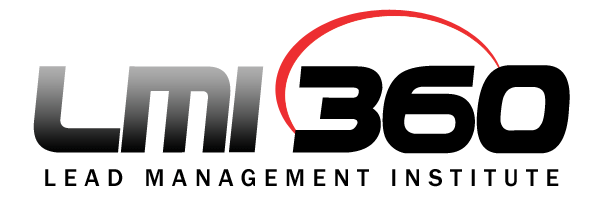
New Year, New Marketing Strategies
New year, new marketing opportunities! Make the most of 2025 by reflecting on last year’s marketing efforts. Ask yourself: What new tactics did you implement? Were they effective? What growth areas are you eager to explore? Answering these questions will help you identify growth opportunities, and we’re here to help you navigate those opportunities with some impactful strategies for 2025.
Social Media Marketing: Connecting with Your Audience
Social media remains vital, but a strategic approach is paramount. Simply having a presence isn’t enough; you need targeted content and engagement.
- LinkedIn: Best for B2B, networking, and thought leadership. It’s particularly effective for lead generation and building professional connections. (77% of B2B marketers use LinkedIn for lead generation – Source: Content Marketing Institute)
- Instagram: Ideal for visual content, brand building, and reaching younger audiences. Utilizing features like Reels and Stories is crucial for maximizing visibility and engagement. (Instagram boasts over 2 billion monthly active users – Source: Statista)
- Facebook: Offers broad reach and targeted advertising, making it suitable for various business types. Building communities through Facebook Groups can also foster strong customer relationships. (Facebook still has over 2.9 billion monthly active users – Source: Meta)
- TikTok: Excellent for short-form video and reaching Gen Z/Millennials. Success on TikTok requires creative and engaging content that aligns with current trends. (TikTok has over 1 billion monthly active users – Source: TikTok)
- X (formerly Twitter): Suitable for real-time updates, news sharing, and customer service. It’s a useful platform for participating in industry conversations and building brand awareness.
Choose platforms relevant to your target audience and focus on valuable, engaging content that sparks conversation. Measure success through engagement (likes, comments, shares), reach (number of unique views), website traffic is driven by social media links and lead generation.
Email Marketing: Direct Customer Relationships
Email remains highly effective for nurturing leads and driving conversions, offering a direct line of communication with your audience.
Why it Works: Direct communication, personalized messages, and targeted offers create a more personal experience for subscribers.
Best Practices: Audience segmentation (tailoring messages to specific groups), personalized messages (using names and relevant information), valuable content (offering helpful resources and insights), and clear calls to action (guiding recipients toward desired actions).
Email Marketing Conclusion: Email builds strong customer relationships and drives growth by providing valuable information and targeted promotions. Track success using open rates (percentage of emails opened), click-through rates (percentage of recipients who clicked links), conversion rates (percentage who completed a desired action), and unsubscribe rates (indicating potential content or targeting issues).
Phone Outreach: Personal Connections
Human connection remains a vital aspect of business and life, even as digital interactions become more prevalent.
Phone Calls: Ideal for building rapport, providing personalized support, and closing high-value deals. Direct conversations allow for immediate feedback and relationship building.
Text Messaging (SMS Marketing): Great for quick updates, appointment reminders, and time-sensitive offers. Its immediacy makes it highly effective for urgent communications. (SMS open rates are as high as 98% – Source: Mobile Marketing Watch).
Best Practices: Personalize communication to show you value them, be respectful of their time by keeping interactions concise, and provide value through helpful information or exclusive deals.
Phone outreach enhances digital strategies and builds stronger relationships by offering a personal touch. Gauge effectiveness through call completion rates, conversion rates (from calls and texts), and customer satisfaction (measured through surveys or feedback).
Video Marketing: Visual Engagement
Video content is crucial for connecting with audiences in the current visually driven world.
Why it Works: Engaging, informative, and easily shareable across various platforms. Video can convey complex information in a concise and compelling way.
Where to Use Video: YouTube (for longer-form content and tutorials), social media (for short, engaging clips and live streams), websites (to enhance user experience and provide product demos), and email marketing (to increase click-through rates and engagement).
Video captures attention and conveys messages effectively, enhancing brand storytelling and engagement. Monitor success through video views, watch time (indicating how engaging the content is), engagement (likes, comments, shares), and website traffic driven by video links.
Webinars: Educating and Engaging
Webinars connect with audiences in real time, providing valuable information and fostering a sense of community.
Why They Work: Lead generation, establishing thought leadership by showcasing expertise, and interactive Q&A sessions that address audience questions directly.
Best Practices: Choose a relevant topic that resonates with your target audience, promote your webinar through various channels, provide valuable content that attendees can implement, and actively interact with your audience during the session.
Webinars educate audiences and generate qualified leads by providing valuable insights and fostering direct interaction. Analyze performance using webinar attendance, lead generation (number of sign-ups and qualified leads), and post-webinar engagement (follow-up surveys and content downloads).
Association Events & Conferences: Face-to-Face Networking
Trade shows offer valuable face-to-face connections that are difficult to replicate online.
Why They Matter: Showcase products and services tangibly, network with industry players and potential partners, and generate leads through direct interactions.
Best Practices: Strategic planning to define objectives and target audience, engaging booth design to attract attention, staff who can effectively represent your brand, and prompt lead follow-up after the event (often a key missed part of attending shows and conferences).
Trade shows remain valuable for specific industries, offering opportunities for direct interaction and relationship building. Evaluate their impact by tracking the number of leads generated, the quality of those leads (how likely they are to convert), and the overall return on investment (ROI) of your participation.
Conclusion
Adapting to the current market trends requires embracing new strategies. Combining social media, email, phone outreach, video, webinars, and trade shows builds stronger customer relationships and drives growth. Continuously analyze your results and adjust your strategies accordingly. What new marketing initiatives will you pursue this year?
Not sure where to start? We can help!


